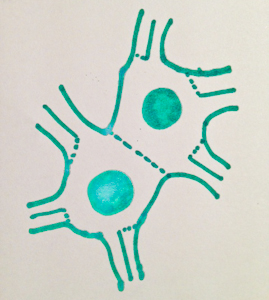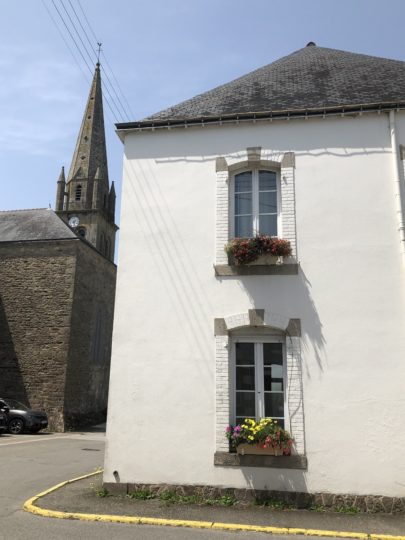I was on my way to Nostang, a small town in the Morbihan north of the ria d’Etel, and I came across my second double giratoire.
As many of you know, I passed my French driver’s exam in the fall, and I’m proud. Ask me anything about the French rules of the road, and I can tell you. I was certain I had seen it all — either on the road or in the practice exams.
 But there seems to be a new creature in the array of options for the French intersection. At least the two examples I have driven through (and survived) were clearly new constructions. The French are so proud of their ubiquitous rond points, I guess they just had to take it one step further.
But there seems to be a new creature in the array of options for the French intersection. At least the two examples I have driven through (and survived) were clearly new constructions. The French are so proud of their ubiquitous rond points, I guess they just had to take it one step further.
As it seemed unsafe to photograph while driving, I have included a very rough sketch of the double giratoire. Were it slightly more professional, you might mistake this for an illustration out of the cell division chapter of a biology textbook.
To help you orient yourself, the circles are the centers of the rotaries, or roundabouts if you prefer. The dotted lines indicate that you must yield. So let’s say you safely yield coming into the rotary as indicated. But then as you’re looping around (and trying to read the road signs to find your exit from the rotary), you come across this second dotted line allowing you to cross over from your rotary to someone else’s rotary. Of course if that someone else is already in their rotary, you must wait for them to pass, thereby clogging up your whole rotary.
Well, it’s no less sensical than giving those entering the rotary the right of way over those already in it (Place de l’Étoile in Paris).
A little internet research turned up this fantastic news report on the vehicular challenge, apparently new to France as of last summer. For the non-French speakers among you, the basic argument of the directeur de la voirie (Director of Highways) is that by making the intersection ridiculously difficult to understand, it makes people slow down and hence pay more attention and get into fewer accidents. Uh huh.
You have to hand it to the French. Why keep it simple if you can make it more complicated?




